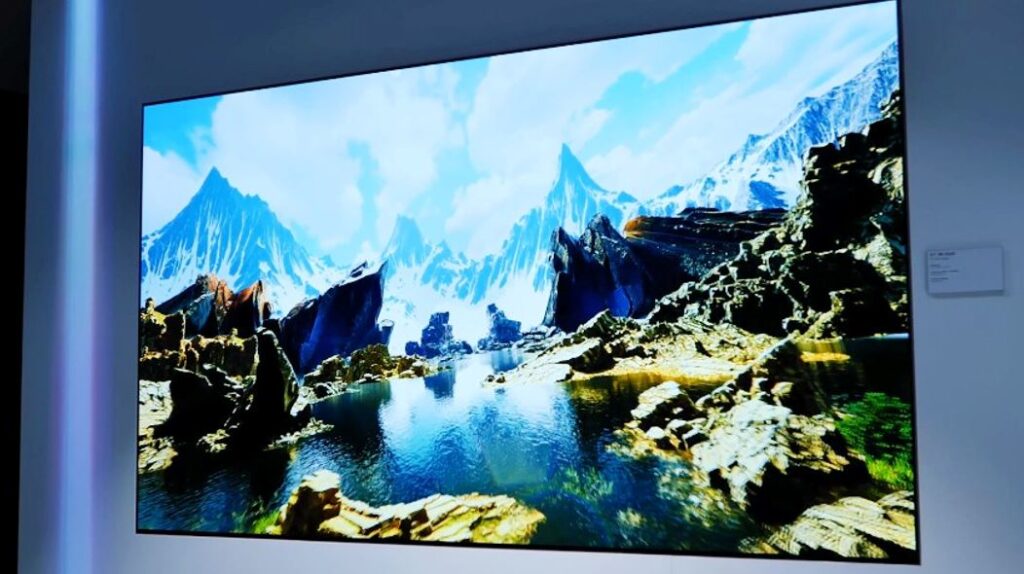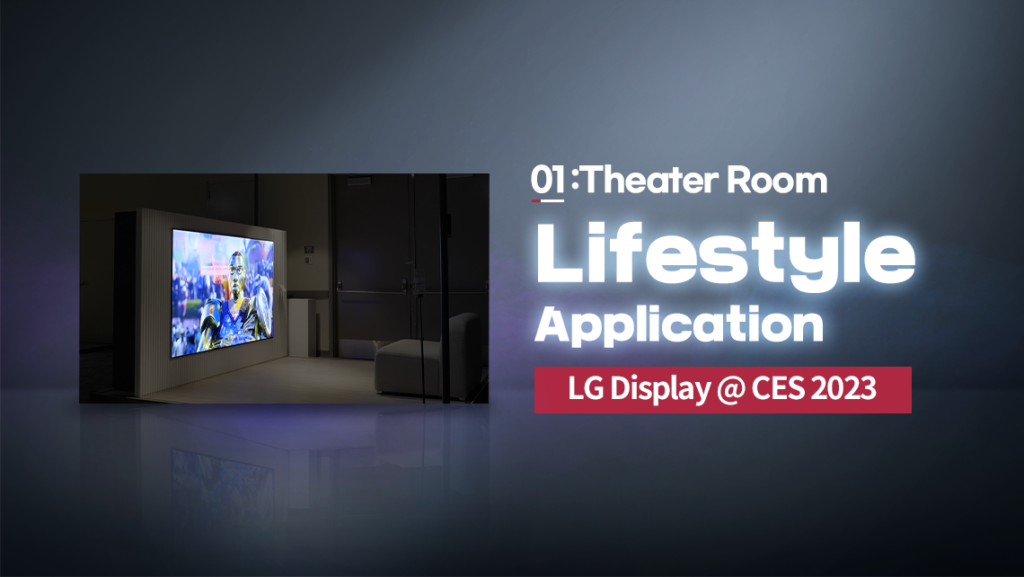By Alex Jensen
The last decade’s been one of transformation for the display industry, as screens have become bigger, better, and more diverse than many of us would have imagined. No doubt continued consumer demand for premium TVs has played a role, but it’s also clear that OLED has been a key driver of the industry’s technological advance – even setting a new standard for high-end displays in the process.

It’s no accident that this development has taken place over the course of a decade, because this year LG Display’s celebrating the 10th anniversary of OLED TVs, which already accounted for over 30% of the global premium TV market last year, according to market watcher Omdia cited by the Korean media. The same report points out that OLED TVs now dominate in Europe, taking up 51% of the world’s biggest market for premium TVs, in addition to 44% of the North American market.
What’s more, OLED’s rapid ascent was actually predicted back in 2012 at CES, the show that’s launched so many important tech breakthroughs, with the declaration that “OLED is potentially the best TV technology ever” on the basis of its effectively infinite contrast, wide viewing angles, lightning-fast response times, and unbelievable form factor. So, it’s fair to say onlookers were wowed by these organic light-emitting diode pixels that could light up and switch off individually – and there was already anticipation of an industry gamechanger when LG Display began production of the world’s first 55-inch full-HD OLED TV panel in 2013.
There would be much more wowing to come. Because their self-emissive pixels don’t require the backlighting we see in other screen technologies, OLED panels transformed the bulky flat-screen TV paradigm by offering new ultra-thin, bendable, and transparent possibilities. Among its shapeshifting form factors, Rollable OLED was particularly mind-blowing when it was introduced for the first time in 2018 – with the ability to roll up like paper, it was declared to be super exciting and indistinguishable from magic, while inspiring the forecast that the TVs of tomorrow will turn invisible.
Yet, OLED has not only set a new standard for TV picture quality and flexibility, but also for increasingly essential elements like eye comfort and environmental friendliness. Many of us have become familiar with the perils of blue light due to greater media awareness. Well, after OLED TVs were introduced a decade ago, their panels were recognized for emitting a lot less blue light than standard displays at the time. LG Display and Eyesafe then ushered in a new era as an OLED panel was named the world’s first-ever TUV Rheinland Eyesafe Certified low blue light TV display. And we’ve since seen further safety ratings adopted by a series of panel manufacturers, with TV companies making sure they have verified safety marks on their products – including covering eye comfort concerns beyond blue light. For example, OLED was the first kind of TV display to be recognized by TUV Rheinland and UL as “flicker free,” an additional consideration when trying to reduce eyestrain.
Moreover, OLED TVs have been put forward as the best choice for the environmentally conscious, with LG Display receiving one Eco-Product certification after another from SGS, which back in 2017 commended the reduction of hazardous substances in OLED TV manufacturing along with the “greater resource efficiency and recycle rates” of OLED panels. This is due to OLED’s self-lighting pixels needing fewer components and plastic to make them work – consider that a 65-inch OLED panel can weigh as little as 0.43 kg compared with around 12 times that weight for an LCD counterpart. And these environmental considerations only get bigger as TVs get larger – the range of OLED TVs extends all the way from 42 to 97 inches.
It’s not difficult to see why various display and TV manufacturers have been drawn to OLED or have tried to adopt technologies in an effort to compete with its benefits. But OLED’s not standing still either, entering its third generation with LG Display’s announcement of META Technology just this year. Its “very smart way to make OLED panels brighter” is based on the addition of billions of micro lenses placed over OLED pixels, plus some smart algorithmic processing. As a result, META Technology’s moved the goalposts by delivering 60% more brightness and widening OLED’s viewing angles by 30%. This makes a massive difference, signaling the further rise of the standard that OLED’s already set for itself.
As we look forward to the next 10 years, the indications are that the trend will continue. Another Korean report cites Omdia when pointing out that OLED TV shipments are set to jump 10% this year, with OLED TVs also set to take up 49.8% of the market for TVs worth US$1,500 or more within 2023. That looks very much like a global tipping point, but that shouldn’t be surprising given how far this technology’s come during a remarkable decade for OLED and the TV industry.










